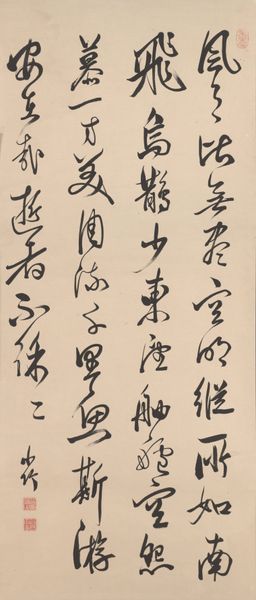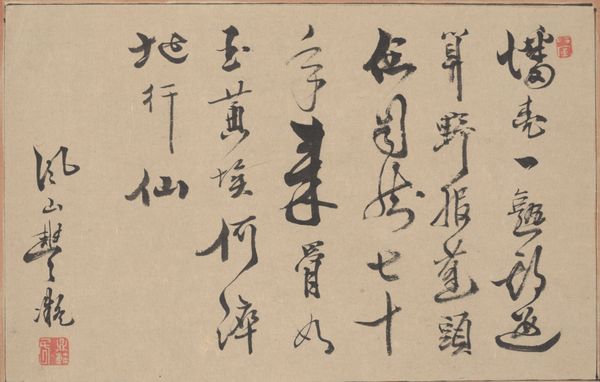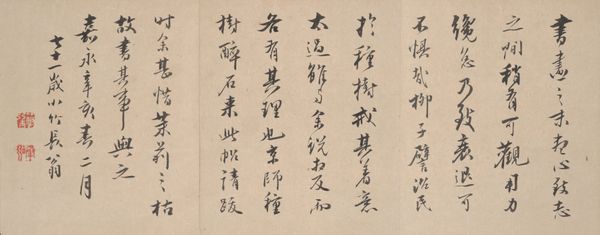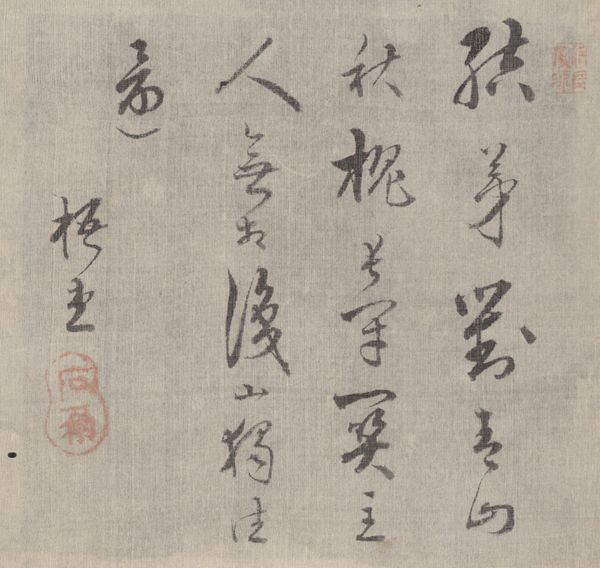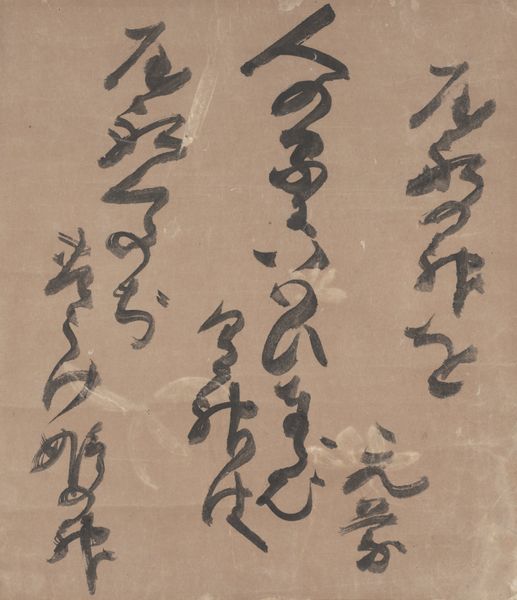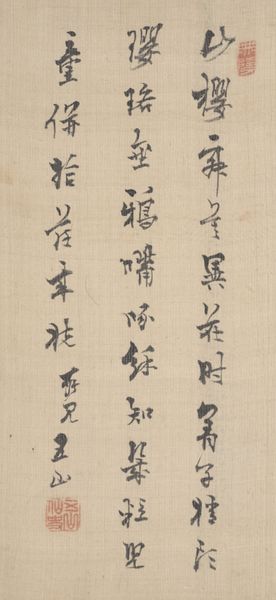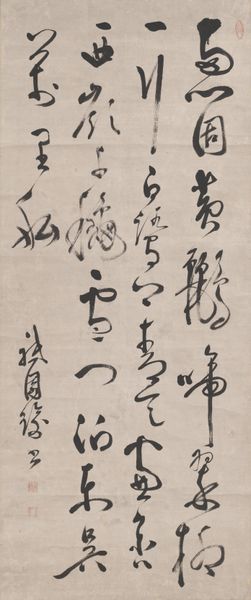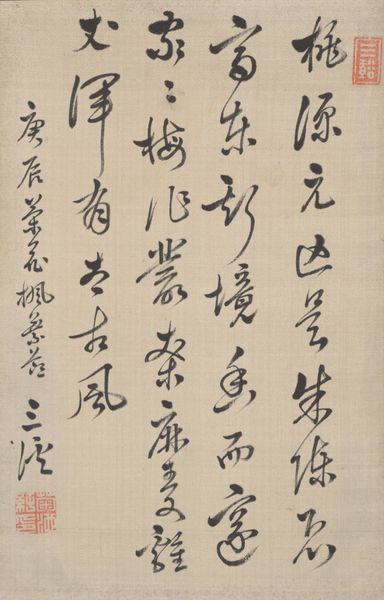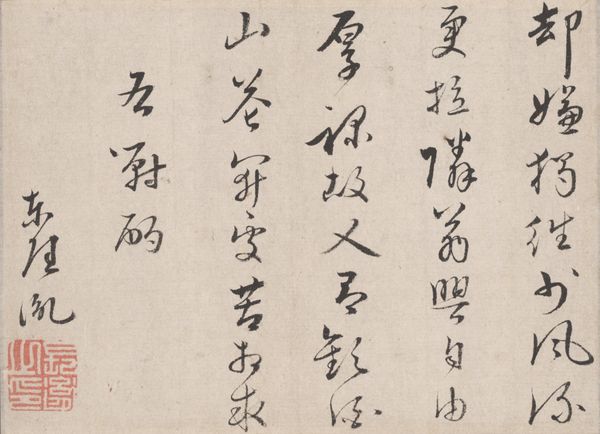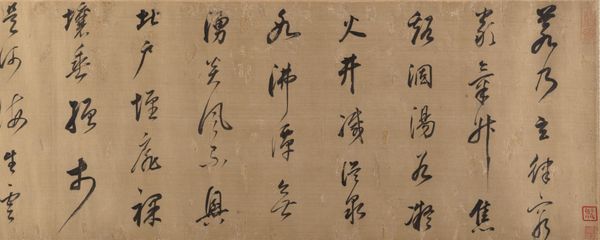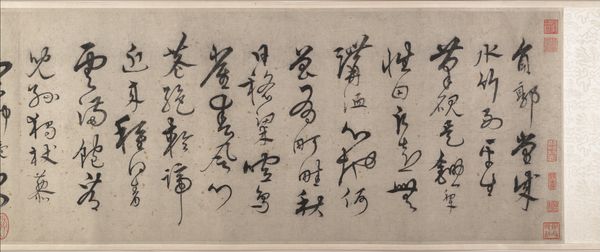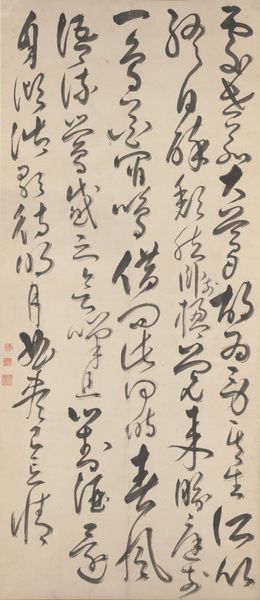
paper, ink-on-paper, ink
#
asian-art
#
paper
#
ink-on-paper
#
ink
#
calligraphy
Dimensions: 6 × 18 1/4 in. (15.24 × 46.36 cm)
Copyright: Public Domain
Ryū Kōbi created this poem while traveling, using ink on paper, sometime in the 18th century. The visual impact of the poem depends on the flow of ink from the brush. This not only forms the ideograms themselves but creates a tonal range from the deepest black to the palest grey. The paper support, too, plays a vital role. The absorbency of the paper influences the ink's spread, contributing to the texture. These subtleties are only possible through traditional techniques, centuries in the making. Consider also the time taken for Ryū Kōbi to master his calligraphic skill, and his dexterity with the brush. Beyond its aesthetic qualities, calligraphy has deep roots in Chinese and Japanese culture, tied to scholarship, spirituality, and the ruling class. It is therefore far more than a decorative art; it’s a direct connection to the artist’s mind and historical context. By appreciating the materials and process, we can gain a deeper insight into its making and cultural value.
Comments
No comments
Be the first to comment and join the conversation on the ultimate creative platform.

